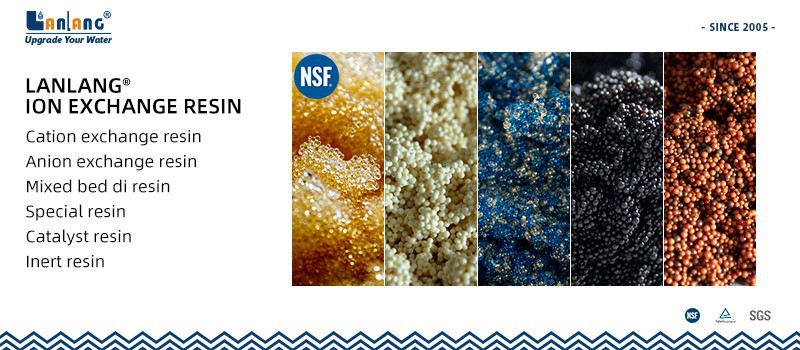
Product Specification
Lanlang ® TY CH520 is a sort of chelating resin which has weakly acidic iminodiacetic acid [-CH2N-(CH2OOH)2] in the styrene / DVB copolymer with special macroporous structure. This product can fix and chelating one or several kinds certain cation in a great range even in the solution with high content. It is used mainly to separate and recover the precious metals ion, especially for the secondary refining of salt brine when the content of Strontium is near or higher than the content of calcium in the process of ion membrane alkaline producing. CH520 is also used to remove cooper, nickel, cobalt, zinc from waste water.
Natural and technogenic sources of rare earth elements (REE) and other rare and scattered metals are remarkable for their chemical diversity. The pregnant solutions going to processing for the valuable metals have very complex compositions.Both targeted elements and competing impurities are present in the solutions in different chemical forms. Thus processing of such materials demands application of different technological tools addressing numerous specific tasks on the way to the final product. Screening work was undertaken to identify the best resins among developmental and commercial products addressing typical cases in the hydrometallurgy of scandium and REE.
Modern technologies consume many advanced materials based on elements, among others, such as rare earth elements (REE). Yttrium and scandium, thanks to their chemical similarity to REE, are often considered in science and technology as belonging to the REE group. Though the REE market size is relatively small, these elements are critically important for some high-tech applications .
Complex compounds of oxide, phosphate, and carbonate or fluoride nature represent most of the REE minerals.Common constituents in such minerals are titanium, iron, thorium, uranium and other metals .Thorium is a common undesired impurity in produced REE concentrates because of its radioactivity. The same is true of uranium . The issue of thorium and REE separation becomes especially important in the processing of monazite minerals, which are rich in both thorium and REE.
Basic Features
|
Application: |
Removal or recovery of heavy metals from process streams or waste waters Brine softening in the chlor alkali industry |
|
Polymer matrix structure: |
Macroporous polystyrene crosslinked with divinylbenzene |
|
Appearance: |
Light yellow, opaque, spherical beads |
|
Functional Group: |
Iminodiacetic acid |
|
Ionic form as shipped: |
Na+ |
Certification
Lanlang is the member of American Water Quality Association. In 2016, Lanlang obtained WQA Certification with NSF / ANSI61 and 372 standard. And in 2022, Lanlang obtained NSF Certification with NSF/ANSI44 and 42 standard.

Hot Tags: ion exchange resin for rare elements separation, China ion exchange resin for rare elements separation manufacturers, suppliers, factory, Ion Exchange Resin for heat exchangers, Ion Exchange Resin for Demineralization, resin for medium pressure boiler, Ion Exchange Resin for Rare Elements Separation, Water Clearning Resin, cation-exchange resin


